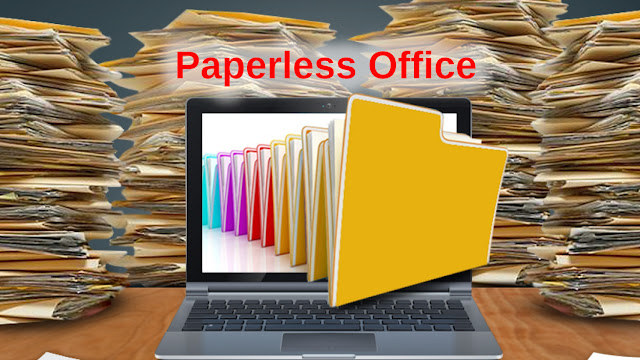The concept of a paperless office refers to the idea of reducing or eliminating the use of paper documents and adopting digital alternatives for managing information, data, and workflows within a company. The goal is to minimize paper consumption, increase efficiency, save costs, and promote environmentally friendly practices. While achieving a completely paperless office may be challenging for some organizations, significant strides can be made toward reducing paper usage and embracing digital solutions.
Here are some steps a company can take to start transitioning toward a paperless office:
Document Digitization: Begin by digitizing existing paper documents. Use scanners or document management software to convert physical documents into digital formats. Organize the digital files into a structured system for easy access and retrieval.
Implement Digital Document Management: Adopt a robust document management system (DMS) to store, manage, and share digital documents securely. A DMS can provide version control, access controls, and collaboration features, reducing the need for printing and distributing physical copies.
Electronic Communication: Encourage the use of electronic communication tools like email, instant messaging, and collaboration platforms to share information and collaborate internally and externally. Minimize the need for printing emails or documents unnecessarily.
E-Signatures: Implement electronic signature solutions to replace the need for physically signing paper documents. E-signatures are legally binding in many countries and can streamline approval processes.
Digital Note-Taking and Annotation: Utilize digital note-taking apps and software for meetings, discussions, and project planning, reducing the need for physical notebooks and handwritten notes.
Cloud Storage and File Sharing: Embrace cloud storage services for secure and centralized storage of digital files. Cloud-based file sharing enables easy access and collaboration from anywhere, reducing the need to print and carry physical copies.
Paperless Billing and Invoicing: Encourage electronic billing and invoicing methods for customers and clients. Provide options for online payments to reduce the need for paper checks and invoices.
Training and Employee Awareness: Conduct training sessions to educate employees about the benefits of going paperless and how to use digital tools effectively. Encourage employees to adopt digital workflows and embrace paperless practices in their daily tasks.
Environmental Awareness: Highlight the environmental benefits of going paperless to create a culture of sustainability within the company. Track and share the reduction in paper consumption and associated environmental impact.
Set Realistic Goals: Establish measurable goals for reducing paper usage and gradually work towards achieving them. Celebrate milestones and successes as the company moves closer to becoming paperless.
It's essential to recognize that the journey toward a paperless office is an ongoing process, and it may take time to fully transition, depending on the size and complexity of the organization. Regularly assess progress, gather feedback from employees, and make adjustments to improve the efficiency and effectiveness of paperless initiatives.


No comments:
Post a Comment
Contact The Wizard!
(he/him)